How and why to stake a tomato plant – expert advice for the best ways to protect your plants
All tomatoes benefit from being supported as they grow, but how do you choose the right stake?
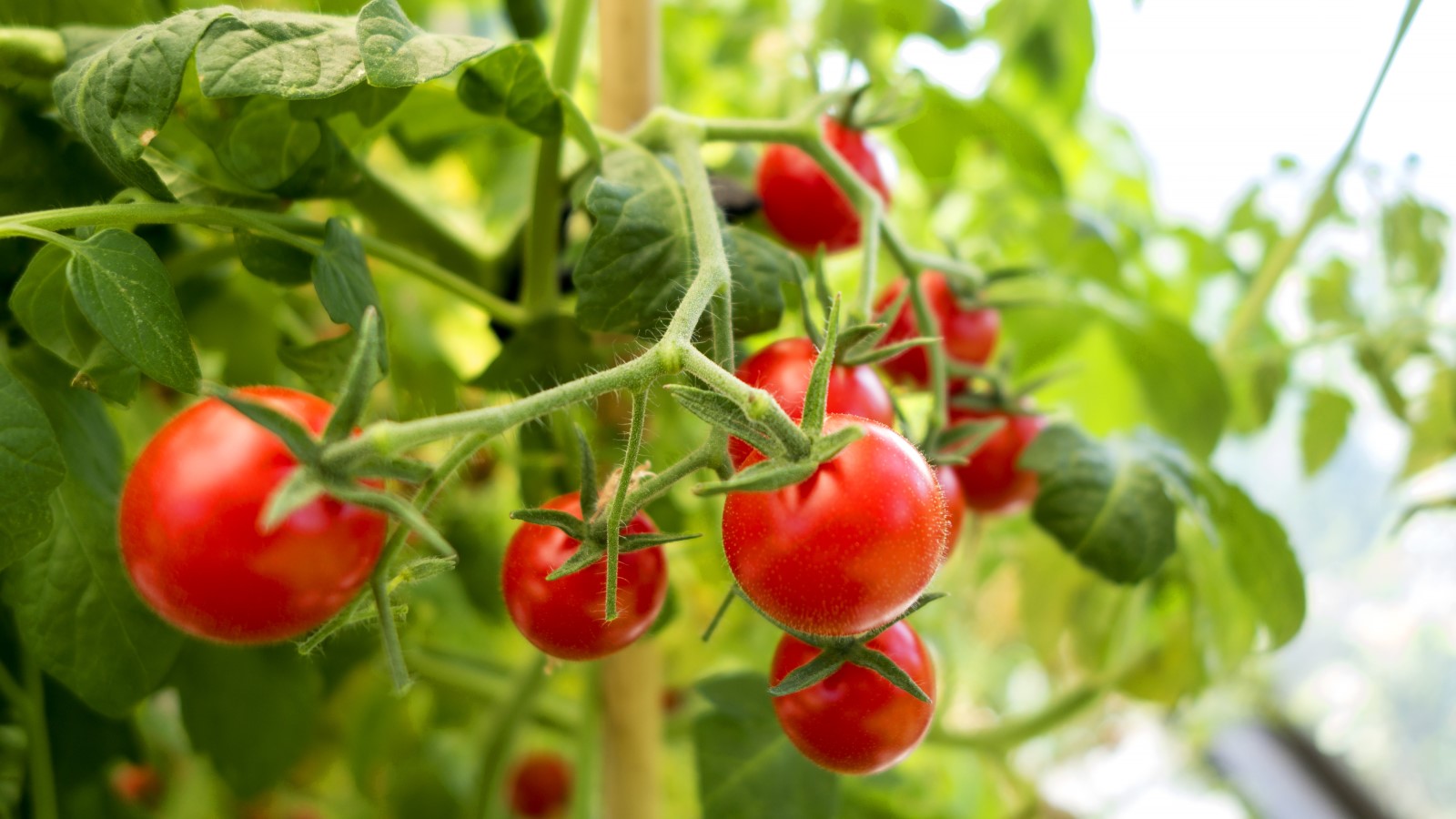

It is important to stake a tomato plant to ensure the fruits are undamaged and you get the best harvest possible. No matter what type of tomato you are growing, they will benefit from being supported as they grow.
Tomatoes can be bolstered in a variety of ways, including using tall stakes, cages, or trellises. They all give vital stability to a tomato plant as it grows and the support needed when the plants are laden with fruit.
When growing tomatoes it is important to consider how you intend to stake your plants and to do it at the correct time. That always means putting the stake in place early and continually tying the plant to the stake as it grows.
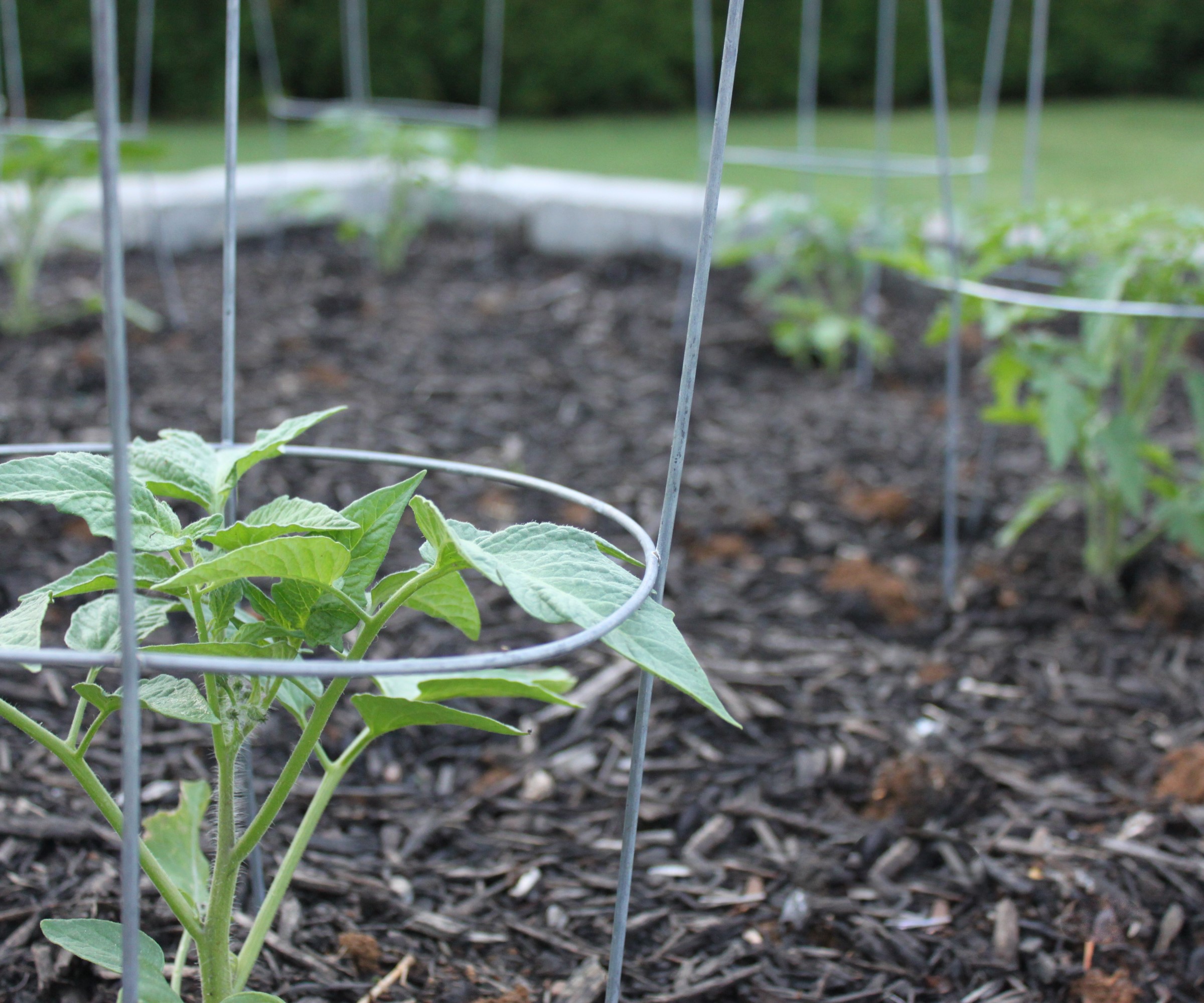
Cages are one of the most popular ways to support tomato plants
Do tomato plants need stakes?
It is most important to stake indeterminate tomatoes, also known as vine or cordon tomatoes. There are key differences between indeterminate tomatoes and determinate tomatoes, primarily in how they grow. The former continue to grow throughout the season and are always trained to structures or supports, while determinate types are smaller and more compact bush tomatoes. It is recommended to stake indeterminate types, while even determinate types can sometimes benefit from some added support.
As tomatoes can grow very tall, between six and ten feet, they need staking to ensure the plant remains upright for when it is time to harvest tomatoes. As the plant grows and produces fruit it can easily bend over and fall, which will damage the plant and also affect the yield. Staking the plants makes harvesting tomatoes easier and more efficient and also offers the benefits of better air circulation and reducing any likelihood of disease and pest infestations.
Annette Hird, a keen tomato grower and editor of Easy Urban Gardens, claims a tomato stem that is not staked will grow along the ground and cause problems for the fruits. She adds: ‘The fruit will also sit on the ground and this can result in fruit rot. Plus, the fruit is also easier for snails and slugs to attack. And, growing along the ground means that there's less airflow around the plant and it's more difficult for the sun to ripen the fruit.’
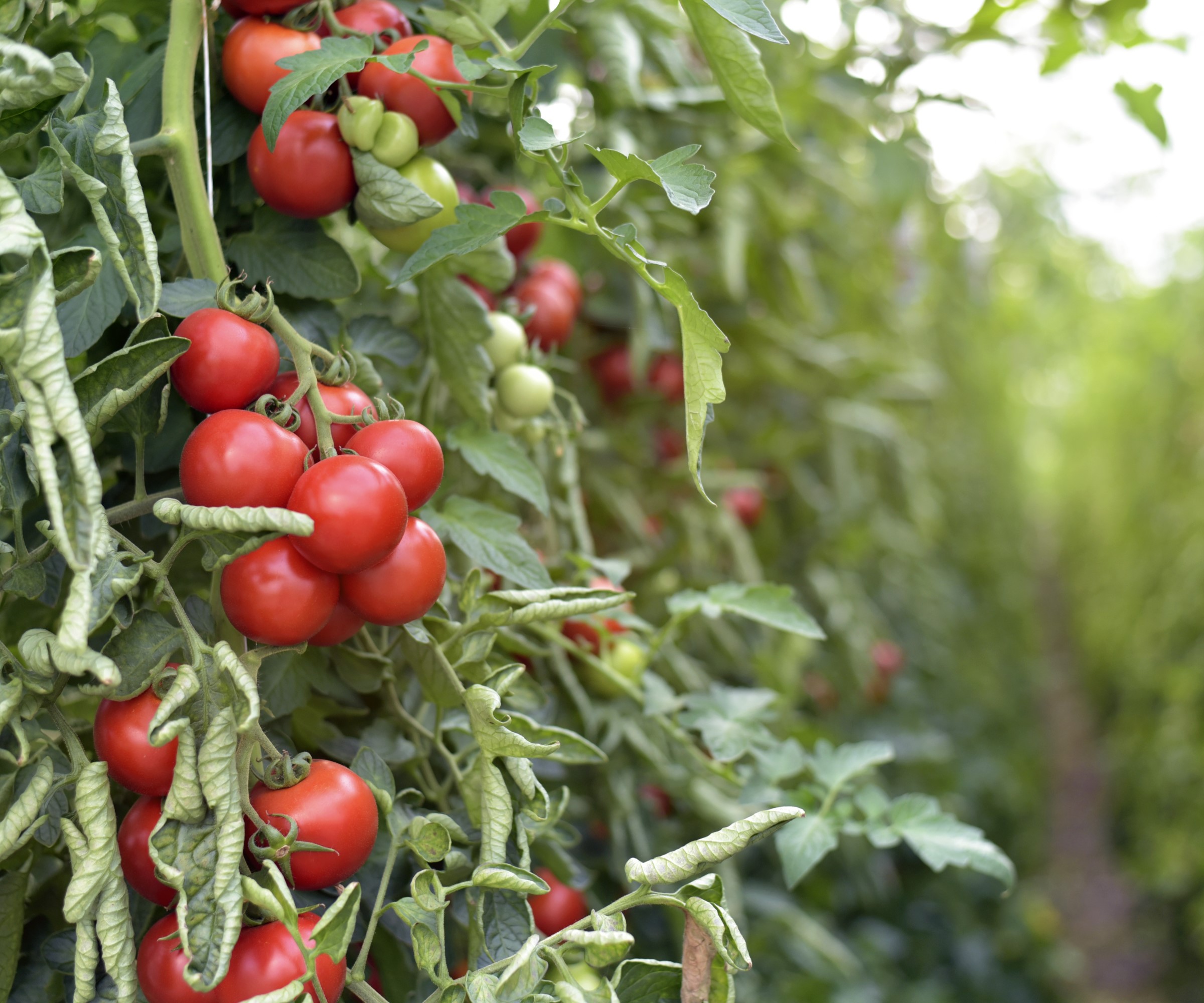
The weight of the plant, especially laden with fruit, means it needs help when it comes to support
How to stake a tomato plant
There are a few common tomato staking methods, including a single stake or post, a trellis, or tomato cages. Always check your tomato varieties to make sure of their growth habit and their expected final height, so you know any chosen stake or support is going to be sufficient during the season.
Not supporting plants is a common tomato growing mistake, as is not putting the stakes in place at the right time. It is always recommended to put your stake in place at the time of planting tomatoes. At this point the tomato seedlings are small and you can see the best position, while if you wait till the plants develop to put the stake in you increase the risk of damaging the plants or putting the stakes through the developed roots in the ground.
Emily Jones, a tomato grower for over 30 years and the person behind Tomato Mentor, advises that, when staking tomatoes, the support needs to be placed ‘close to the plant’ and the stem then tied to the stake using soft ties to avoid damaging the stem.
She explains: ‘When staking tomatoes, it's important to choose a sturdy support structure that can handle the weight of the plant and its fruit.
‘Using a stake involves driving a sturdy wooden or metal stake into the ground next to the plant and tying the main stem to the stake as it grows.
‘A tomato cage is a wire structure that surrounds the plant and supports the branches as they grow. A trellis is similar to a stake, but involves attaching a series of horizontal wires or strings to a wooden or metal frame.’

Emily has been growing tomatoes for more than 30 years, and she founded the blog Tomato Mentor as a way of helping others to improve their growing methods. She regularly writes about everything from watering tomato plants and common tomato pests to the best growing techniques people should use in their own space.
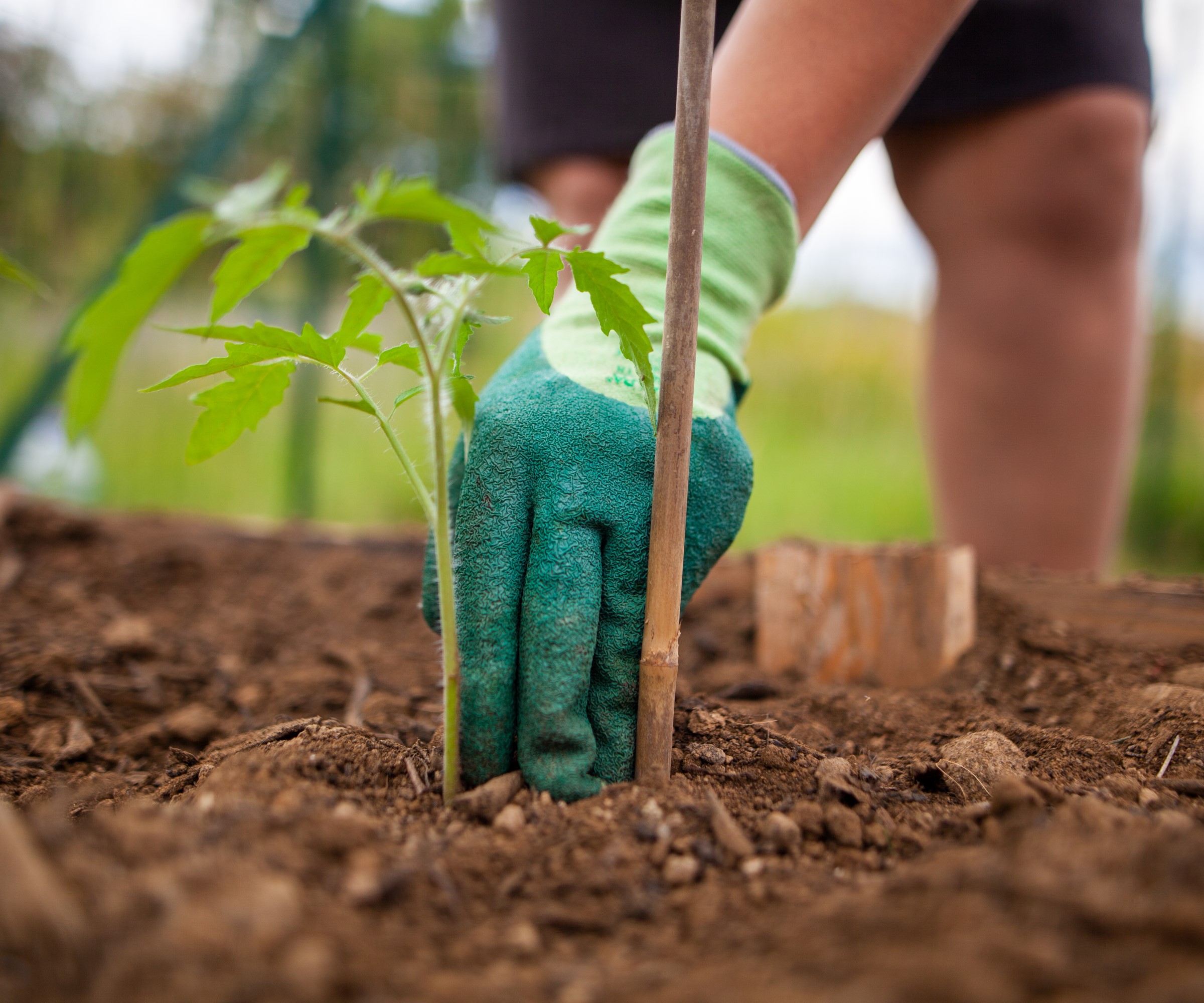
A bamboo cane can be put in place when planting the young tomato
Key methods for staking tomato plants
There are three main methods you can use for staking a tomato plant:
Tomato stakes
Tall tomato stakes are ideal for indeterminate tomatoes and can come in many materials, from bamboo poles that are commonly found in retailers to more stronger and durable options, such as these sturdy fiberglass plant stakes available at Amazon.
Any stakes need to be at least six feet tall and hammered around two feet into the ground in order to ensure it is sturdy enough to hold the weight of a fully-grown tomato plant. Put the stake around six inches away from the tomato plant and use the likes of twine or cloth strips to tie the plant to the stake – never use a material that can cut into the plant, such as wire.
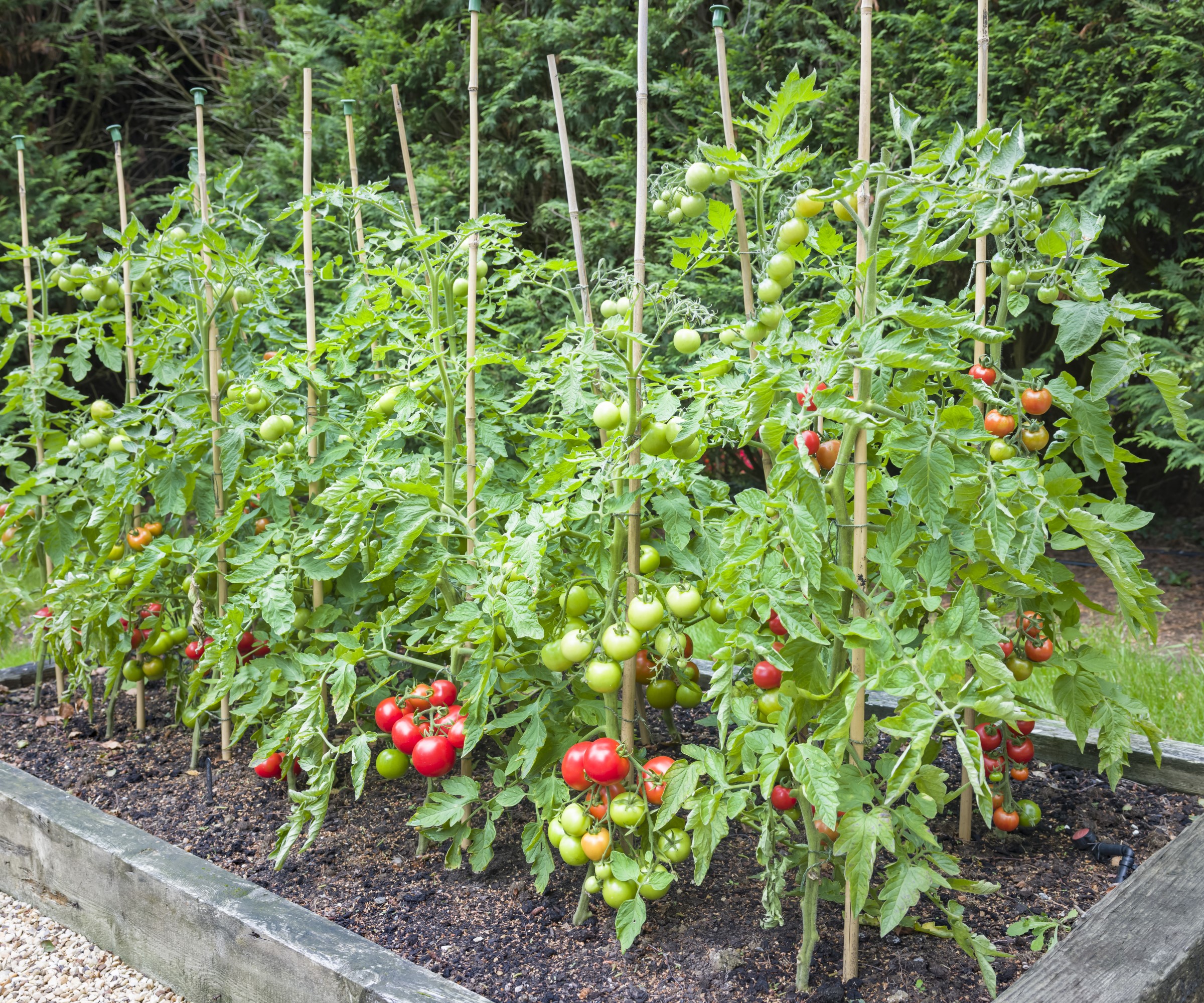
Stakes need to be tall enough to support a fully-grown plant
Tomato cages
These can be used for either indeterminate or determinate tomatoes, however as some types of vine tomatoes can climb up to 10 feet tall they can still outgrow a tomato cage. You can get tomato cages that can be clipped together to accommodate taller tomato plants, such as the K-Brands Tomato Cage available on Amazon that can be assembled up to six feet.
Smaller tomato cages can be used to support a determinate tomato. Even though determinate tomatoes don’t grow as tall – around three-to-four feet – they can still benefit from a cage to stop branches snapping or fruits from sitting on the floor and potentially rotting. Cages are sturdy structures to help support plants, but do not impinge on the gardener when it comes to essential maintenance tasks, such as pruning tomato plants.
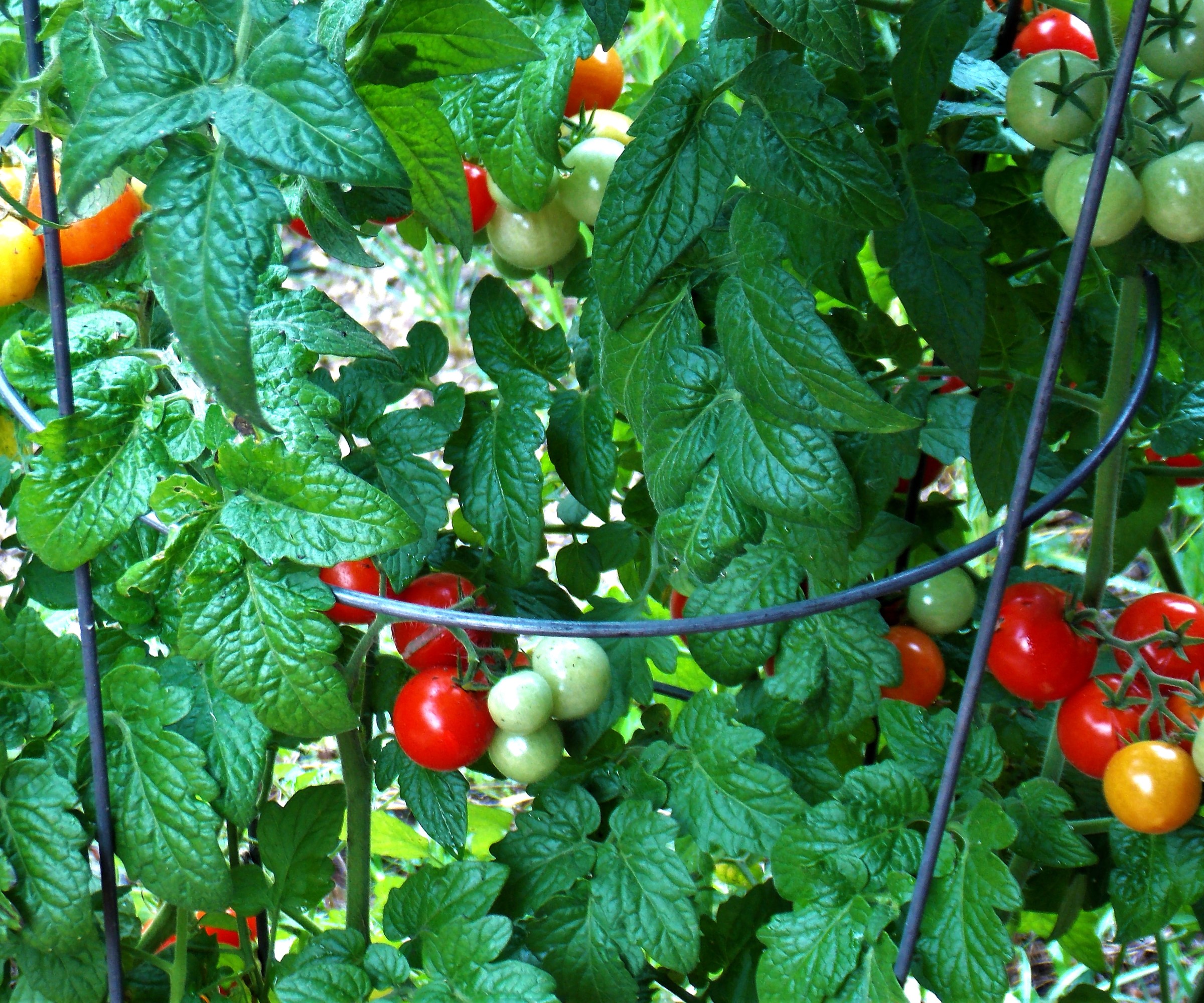
Cages can support all varieties of tomatoes
Tomato trellis
This traditionally has a frame, with wires or string running horizontally across to tie the stems into. These can come in various shapes and sizes, while also being made of different materials. This can include metal, plastic or wooden posts, and can have the same materials running horizontally to offer a stronger option than string. Netting, metal mesh, or wire fencing are also options to provide a sturdy frame behind the plants for the stems to be tied to.
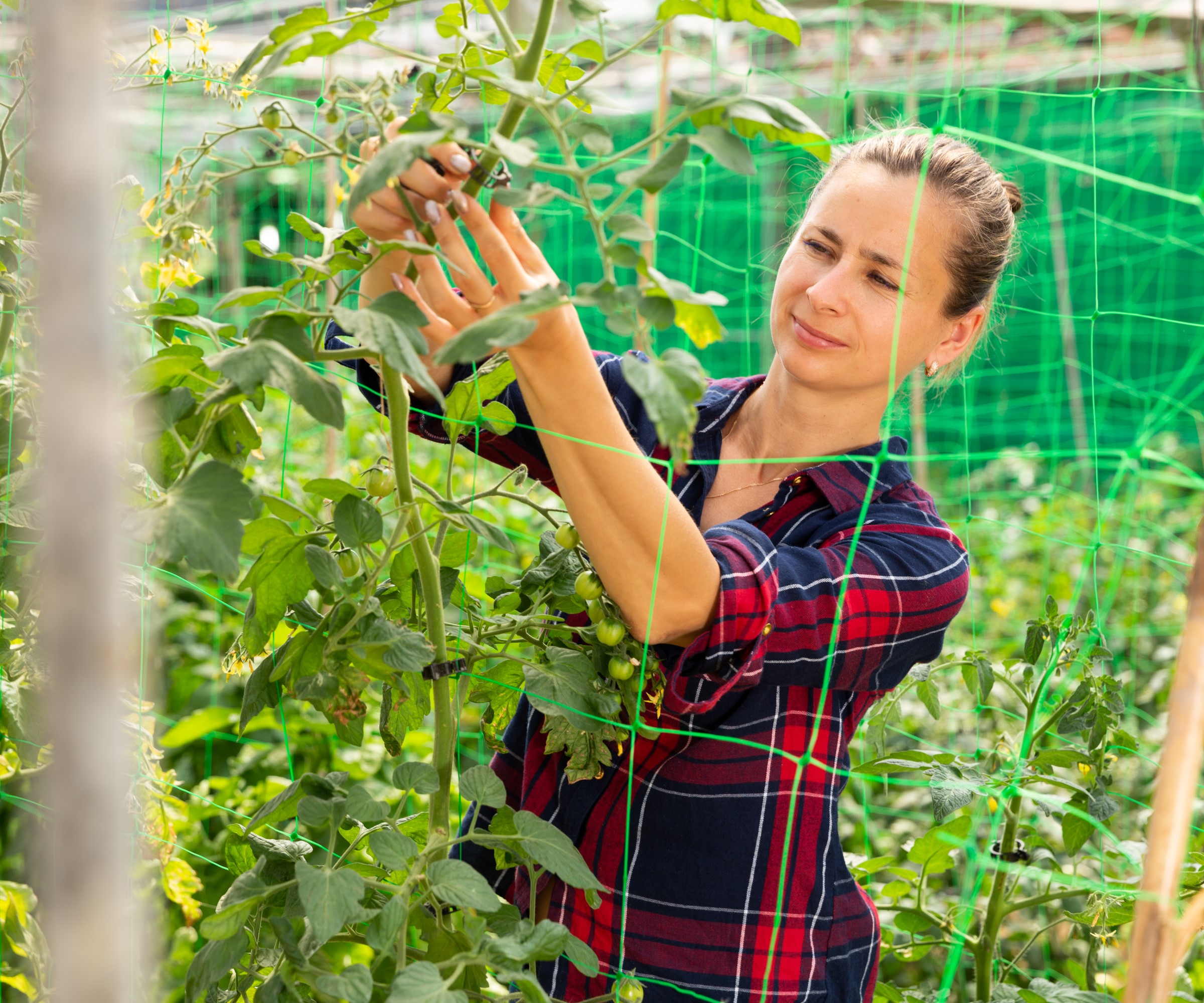
A tomato trellis needs to be sturdy enough to support the plant
Staking a tomato plant in a pot
Any of the methods outlined above can be used when you are growing tomatoes in pots, or any other containers such as growing tomatoes in buckets. Either stakes, cages or trellis can be used, depending on the type of tomato variety you are growing.
Any varieties of tomatoes can be grown successfully in pots, providing the container is of sufficient size to accommodate the compost required. Determinate or bush varieties of tomatoes are regarded as being the best for pots, therefore a cage is possibly the most efficient option to protect the plants from snapping under the weight of the fruit.
As it is possible to grow indeterminate varieties in pots, then stakes or taller cages are the best option to support them. These do not put extra weight on the side of a pot, like a large trellis could, potentially causing the pot to topple. A trellis would work if it was attached to a wall or fence and the pot placed next to it.
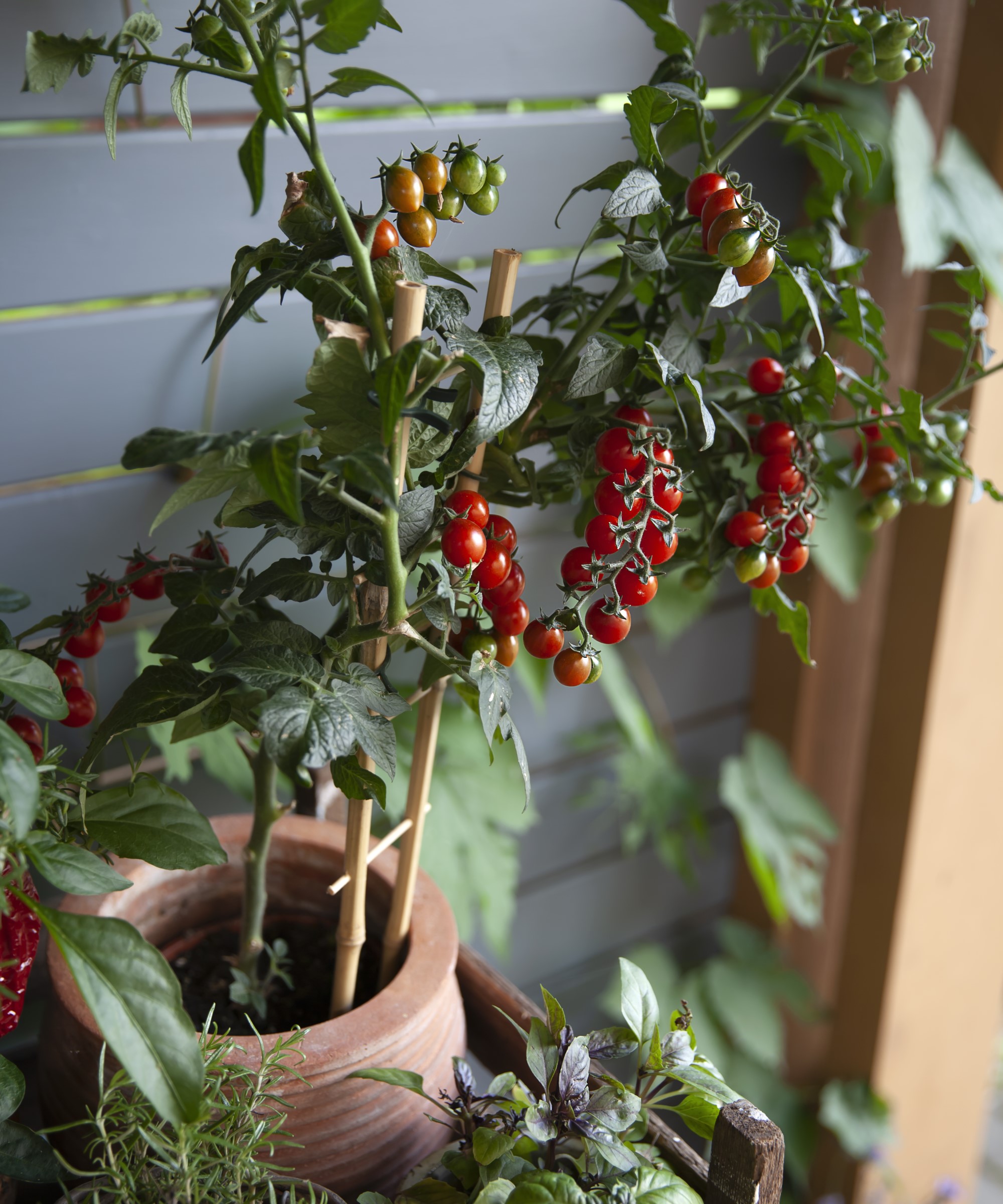
A small trellis could be used for a tomato in a pot
FAQs
How do you tie tomato plants to a stake?
Tomato plants need to be tied regularly and carefully to any stakes as they grow. The first tie should be when the plant is about 12 inches in height and ideally you want to continue securing the plant to the stake at intervals of about 8-10 inches as they grow. Use a soft material, including the likes of twine, string, ripped lengths of cloth, or plastic ties, to attach the stem to the stake. You can get specific clips such as these Tomato Clips available at Amazon to secure plants to string, cages, trellis, or stakes.
It is recommended to tie a tomato plant to a stake using a figure-of-eight and to tighten the tie around the stake rather than the stem. Using this technique it ensures the stem is in one of the loops and the stake in the other and reduces any potential of damage on the stem as the plant grows.
What happens if you don't tie up tomato plants?
If you do not tie up tomato plants then they are likely to sprawl along the ground. As indeterminate varieties are naturally vining, they will spread quickly and into a mass. This will mean any fruit is at risk of being eaten and the sprawling mass of foliage is likely to block fruits from getting the sunlight required to ripen.
Not tying up the plants will also make maintenance more difficult. Watering plants without soaking the foliage will be nearly impossible to do and having lots of wet foliage will put the plant at an increased risk of fungal diseases. A failure to tie up plants will have a big impact if you grow tomatoes indoors as it will cause a huge mess in your space, that could be easily avoided by tying plants up.
Staking a tomato plant is a very important technique when growing tomatoes and is one aspect which should never be disregarded. You will never get a good crop of tomatoes without supporting the plants, especially if you are growing indeterminate varieties. Supporting tomatoes need not be complicated or expensive, but it will always remain vitally important.
Sign up to the Homes & Gardens newsletter
Design expertise in your inbox – from inspiring decorating ideas and beautiful celebrity homes to practical gardening advice and shopping round-ups.

Drew’s passion for gardening started with growing vegetables and salad in raised beds in a small urban terrace garden. He has worked as a professional gardener in historic gardens and specialises in growing vegetables, fruit, herbs, and cut flowers as a kitchen gardener. That passion for growing extends to being an allotmenteer, garden blogger, and producing how-to gardening guides for websites. Drew was shortlisted for the New Talent of the Year award at the 2023 Garden Media Guild Awards.
-
 5 living room paint colors going out of style in 2025
5 living room paint colors going out of style in 2025What colors are going to date your living room this year? We look at the shades that are falling out of favour in 2025
By Sophia Pouget de St Victor
-
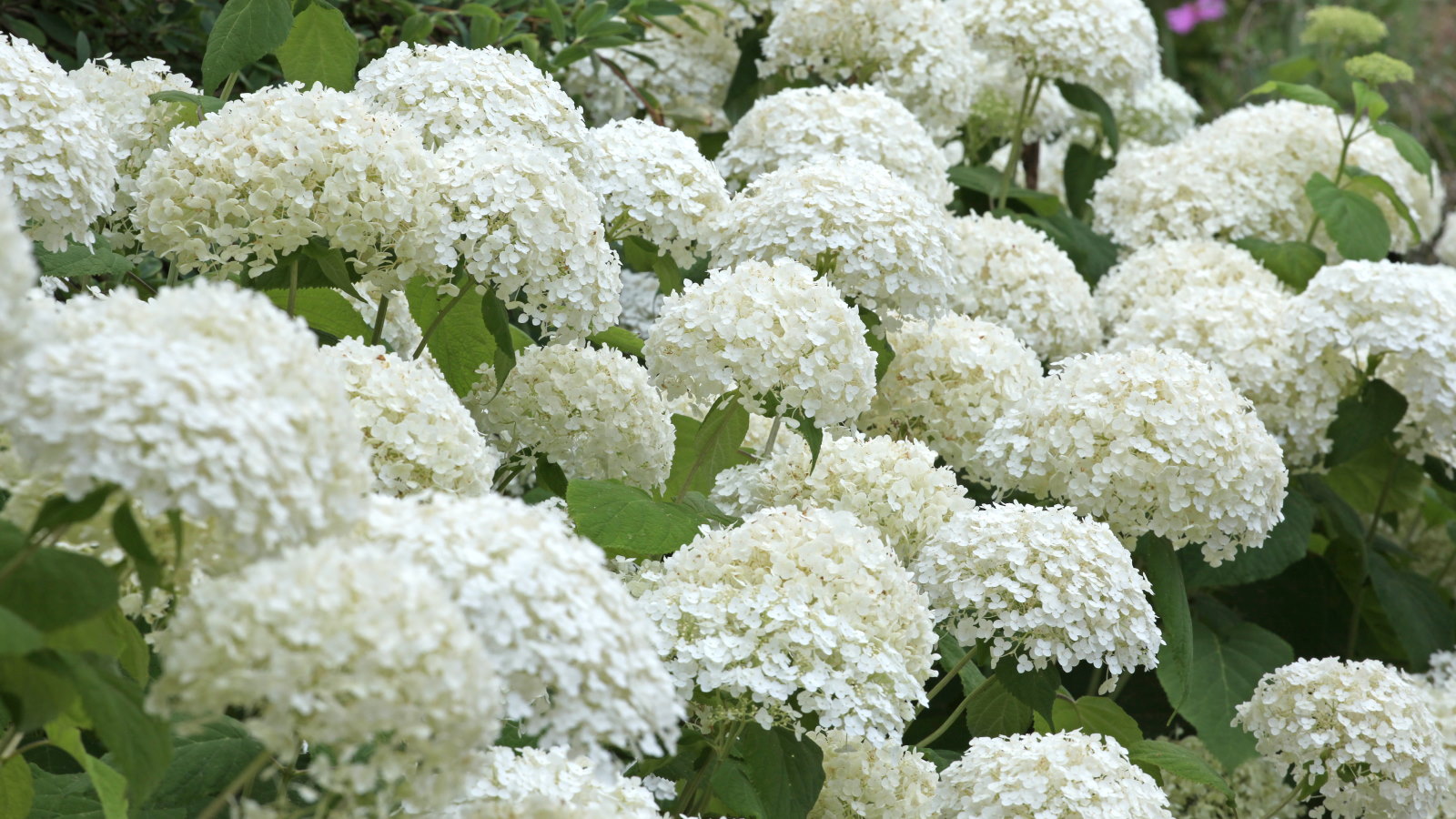 Your hydrangeas will flourish with bigger blooms and healthier growth thanks to this natural material
Your hydrangeas will flourish with bigger blooms and healthier growth thanks to this natural materialDiscover why you should be using leaf mold to mulch hydrangeas
By Drew Swainston